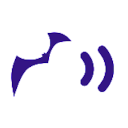Tech Equity beyond Accessibility
So your product is accessible. Great! But can people with disabilities use your product as easily and quickly as people who aren’t disabled?
Accessibility, taken literally, implies merely that a product is able to be accessed by all users. Access + able.
In this short blog post I suggest a higher standard to drive product design and development: tech equity.
What is Tech Equity?
Tech equity means an equitable experience for all users of technology.
Tech equity has three elements:
- Equal Outcomes
- Equal Usability
- Equal Time
Equal Outcomes
All users should be able to achieve the same outcomes using a product or service. Blind users can order a book. Deaf users can follow a spoken interview. Users with limited mobility can play a video game. Users should not be limited to accessing only half of a product’s features.
In the examples above I’ve used the word “can” — can order, can follow, can play — to make clear that Equal Outcome and accessibility are nearly overlapping concepts.
But thinking in terms of Equal Outcomes leads us to a simple metric: the percentage of product features that can be used successfully by a subset of users.
For example, if audio books or e-books are available for only 25% of the titles in your store, then blind readers enjoy only 25% of the “outcomes” (possible book purchases) compared to sighted readers. That’s not equitable.
Equal Usability
Usability is often measurable, but rarely measured. And if product usability is rarely measured, how can we determine whether the user experience is equitable for all users?
We can start by trying to “measure” a thought experiment.
Imagine a smart phone app that is accessible to users of screen readers. The app has ten buttons. The sighted user may scan the screen for a button and then tap the button with a finger. For the user of a screen reader, the text-to-speech feature enables the user to hear the names of the ten buttons, spoken one at a time.
On a smart phone, the user swipes across the screen to hear the screen reader announce the next button. The user keeps swiping until the desired button is announced, and then double-taps the screen to activate that button.
Even without measuring, our initial guess may be that the screen reader user will expend greater physical effort than the sighted user to activate the fifth of ten buttons on screen.
We could measure the number of swipes and taps a user needs to activate a button. In this case, the sighted user identifies the button visually — without physical effort — and then targets the button with a finger and then taps. The screen reader user may swipe five times, then double-tap to activate the same button.
Then our measure of equity could be the ratio of two numbers: the number of physical motions for the screen reader user, and the number of physical motions for the sighted user.
The higher the ratio, the greater the inequity in usability.
We’ll consider this example with respect to the third element of tech equity: the measurement of time to achieve a desired outcome.
Equal Time
We can measure the time for a sighted user and a screen reader user to complete a task. To re-use the example of the ten-button screen, we can measure the time a sighted user needs to identify and tap a button, and also measure the time a screen reader user needs to identify and activate a button.
To yield a measure of equity, we calculate the ratio of the screen reader user’s time to the sighted user’s time.
The goal of equity would be to achieve a 1:1 ratio of times to activate any of the buttons.
Tech Equity should tickle your Creativity
Perhaps you’re familiar with current limitations of accessibility. Audio interfaces that present information serially necessarily take more time to use, don’t they?
If you start with tech equity as a goal, beyond accessibility, then you may find yourself developing new features and even new technology to improve outcomes, usability, and time.
Please get the word O.U.T.
Outcome, Usability, and Time should be equal for all users. Devising metrics for each of these elements, and improving our scores in these measures, brings us closer to the goal of tech equity.
